True to Patagonia’s usual form, the Black Hole Waist Pack is made from a host of recycled materials given a new lease of life by the ethically-conscious and environmentally-friendly company.
The fabric of the pack’s main body has also been certified as bluesign approved.
- The best mountain bikes under £750 reviewed by BikeRadar
- Best waterproof mountain bike jackets | Tried and tested by our experts
Although bum bags or, if you’re American, fanny packs have been around since the 1960s, it wasn’t until the eighties that they really started to shine, becoming iconic with the era’s loud and sometimes awful fashion trends.
But it was the practicality of the fanny pack that really captured people's imaginations as they offered bigger, more comfortable storage than pockets without the sweaty back syndrome and bulk associated with backpacks.
So, where did it all go so wrong for the waist pack? Once the droves of unfashionable people cottoned onto their practicality and bought them en masse, the sharp end of the fashion industry washed the practical packs from their hands.
In the mountain bike world, riders have heavily relied on backpacks to transport their clobber around, but as some got increasingly frustrated with the cumbersome bag weighing them down and causing their backs to look like they’ve just taken a shower, new, or rather, revisited solutions started to (re)appear.
Enter the bum bag. Now widely accepted as a backpack alternative and no longer subject to the fashionista’s sneers, quite a few brands have jumped on the fanny pack bandwagon, extolling their virtues as genuine on-bike kit-carrying solutions.
The Patagonia Black Hole Waist Pack 5L looks to fly the flag for the bum bag fanatic, so I found out just how good – or bad – it is.
Patagonia Black Hole Waist Pack 5L details and specifications
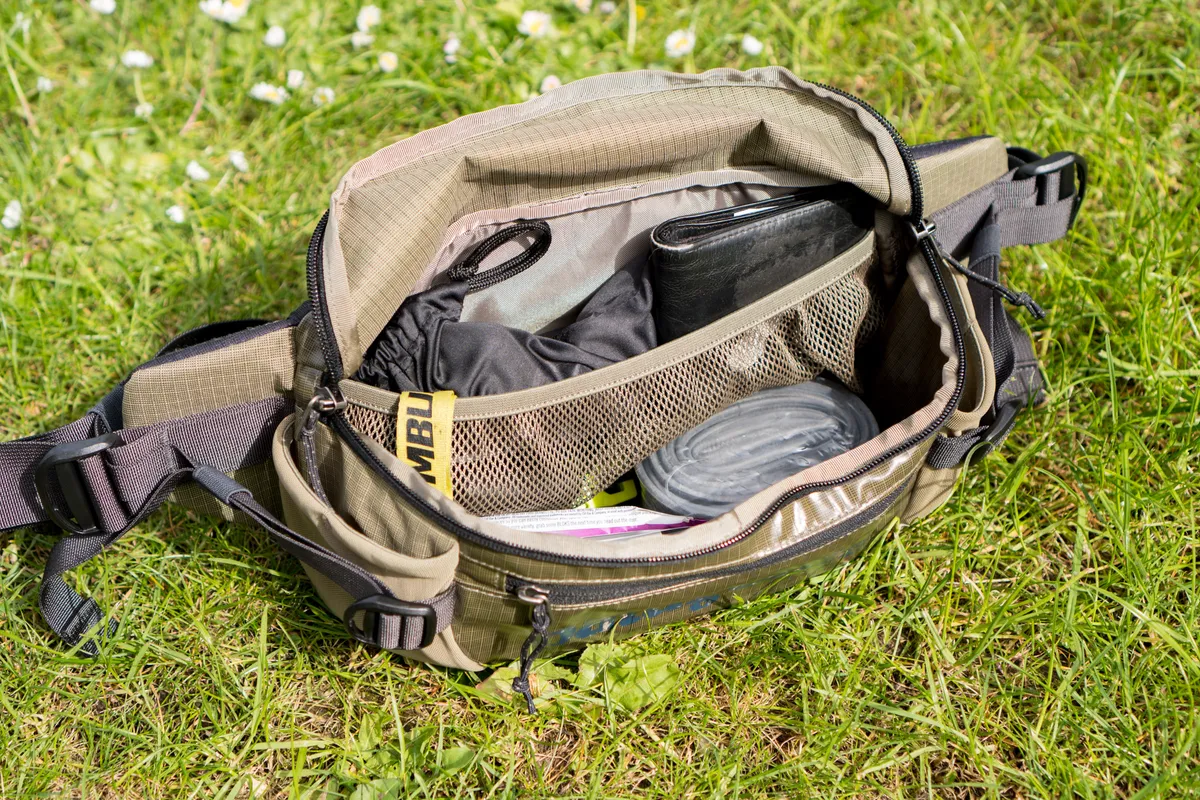
The Back Hole’s main body has two zipped pockets: a larger 5 litre section with a mesh divider opened with a two-way zip; and a smaller, separate pocket that’s just big enough to fit an iPhone X (or similar-sized) phone, and there's a keyring loop hook, but only one single-direction zip.
Either side of the bag’s body are two stretch pockets designed for water bottles. Although the pockets appear pretty small they stretch considerably and can fit a standard diameter cycling water bottle with ease.
There’s a loop on the top of the bag that makes carrying it in your hand easy.
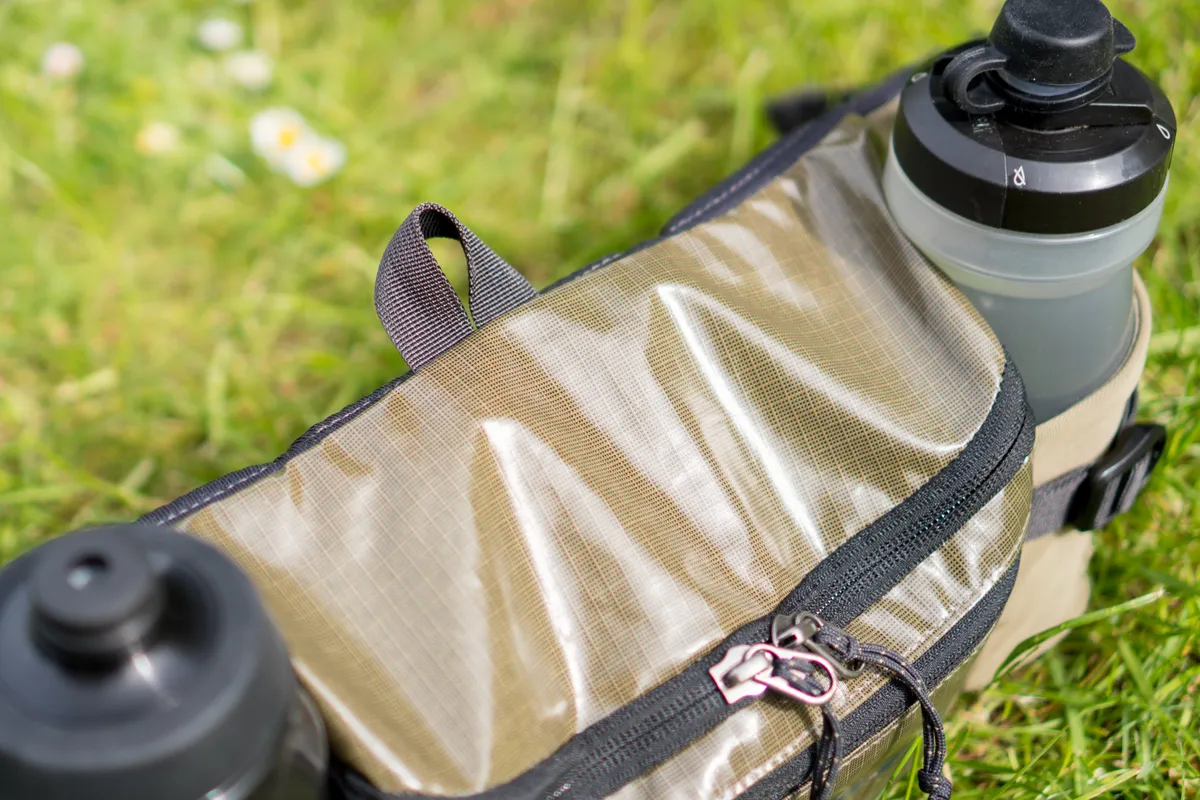
The 38mm waist strap has two points of size adjustment, one for each section of strap. The strap’s joined by a large clip.
There are additional fit adjusters spanning from the bag’s body to the start of the hip strap over the top of the stretch pockets. Patagonia dubs these ‘side compression straps’ and claims they help to keep the bum bag’s weight closer to the body.
The body-facing panel is made from a soft and, Patagonia claims, breathable mesh to help improve comfort.
Patagonia Black Hole material
Patagonia’s Black Hole material, which is used in a lot of its other products such as backpacks and duffel bags, is 100 per cent recycled ripstop polyester that varies in denier (the unit used to measure fibre thickness and density) depending on the product it’s used for.
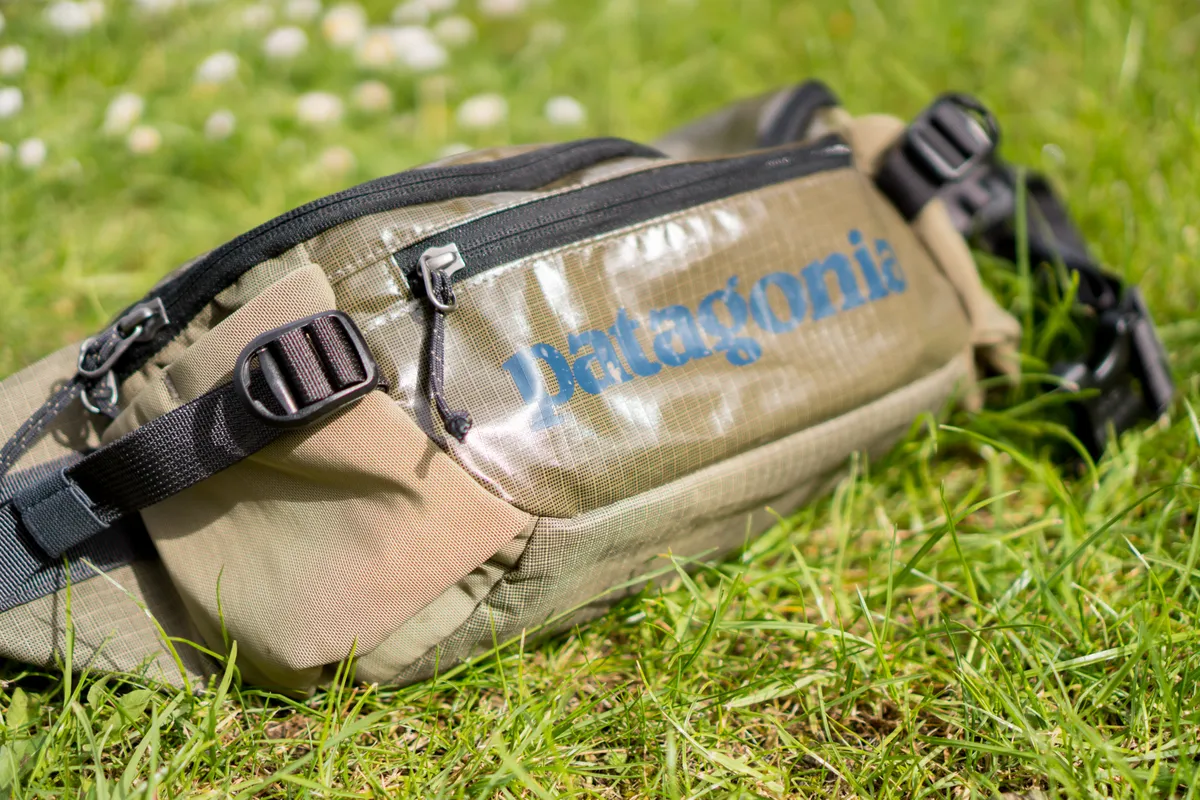
The Black Hole Waist Pack features a 300-denier outer construction with a TPU-film laminate (a flexible, smooth layer) covering.
The bum bag has also been treated with a durable water repellent (DWR) finish.
Patagonia Black Hole Waist Pack 5L performance
Despite the limited 5-litre capacity, I was pleasantly surprised by how much I could fit in the waist pack.
Swallowing a large multi-tool, handpump, tube and tyre levers along with a banana, a couple of cereal bars and a sandwich, and my wallet, keys and phone, it left me begging the question why had I not used one before?
The two side pockets had enough stretch in them to take a 750ml water bottle each, as well.
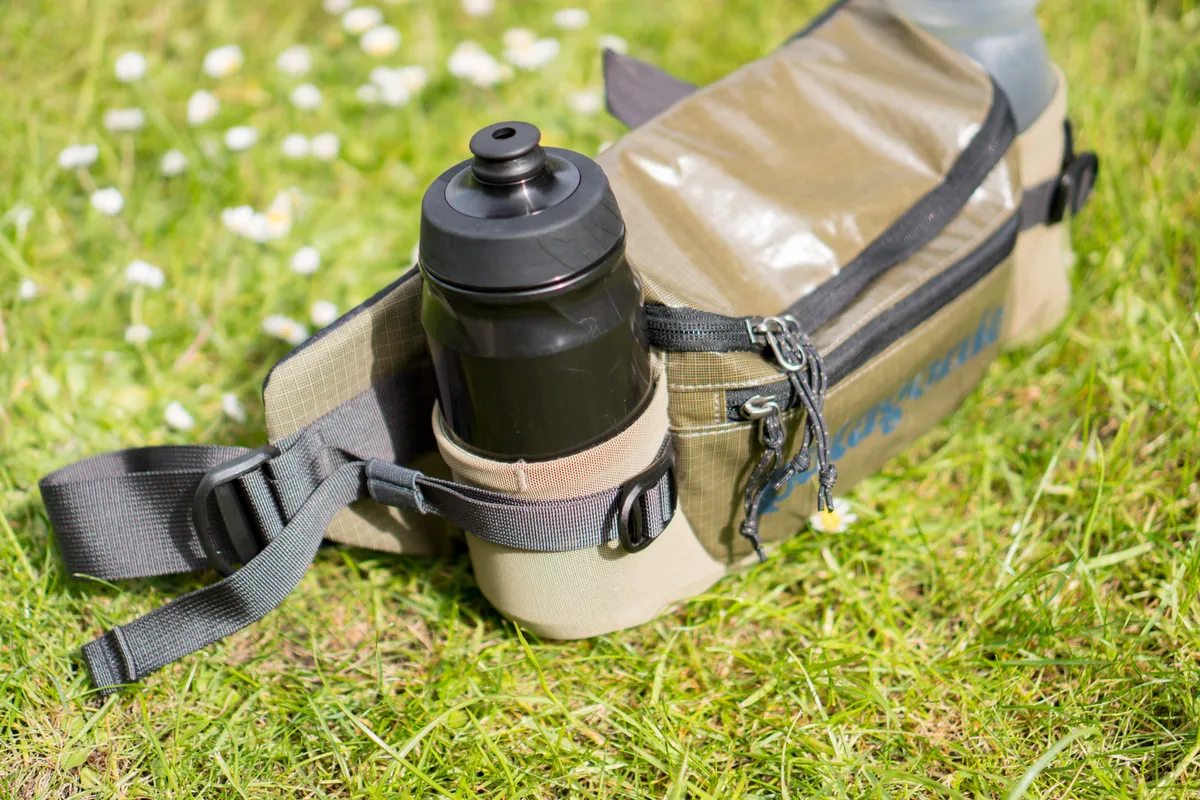
Being able to swallow all of this kit easily meant that, on occasion, the bag weighed over 3,560g fully laden. For reference, packed with the same amount of kit, the EVOC Stage 12l bag I recently reviewed weighed 4,091g.
Although pushing the bag’s capacity wasn’t a problem, it was that weight generated by that volume of kit which posed a few issues.
The large 38mm strap spread the weight well across my waist and stomach, and with the straps correctly tightened the bag stayed put around the small of my back. Adjusting the side compression straps helped to maintain its bulk close to my body, too.
With it fully laden and tightly secured, there were minimal amounts of bounce when trundling along undulating bridleways and fireroads, but when the trails got fruitier the pack’s straps struggled to control the fully-loaded weight.
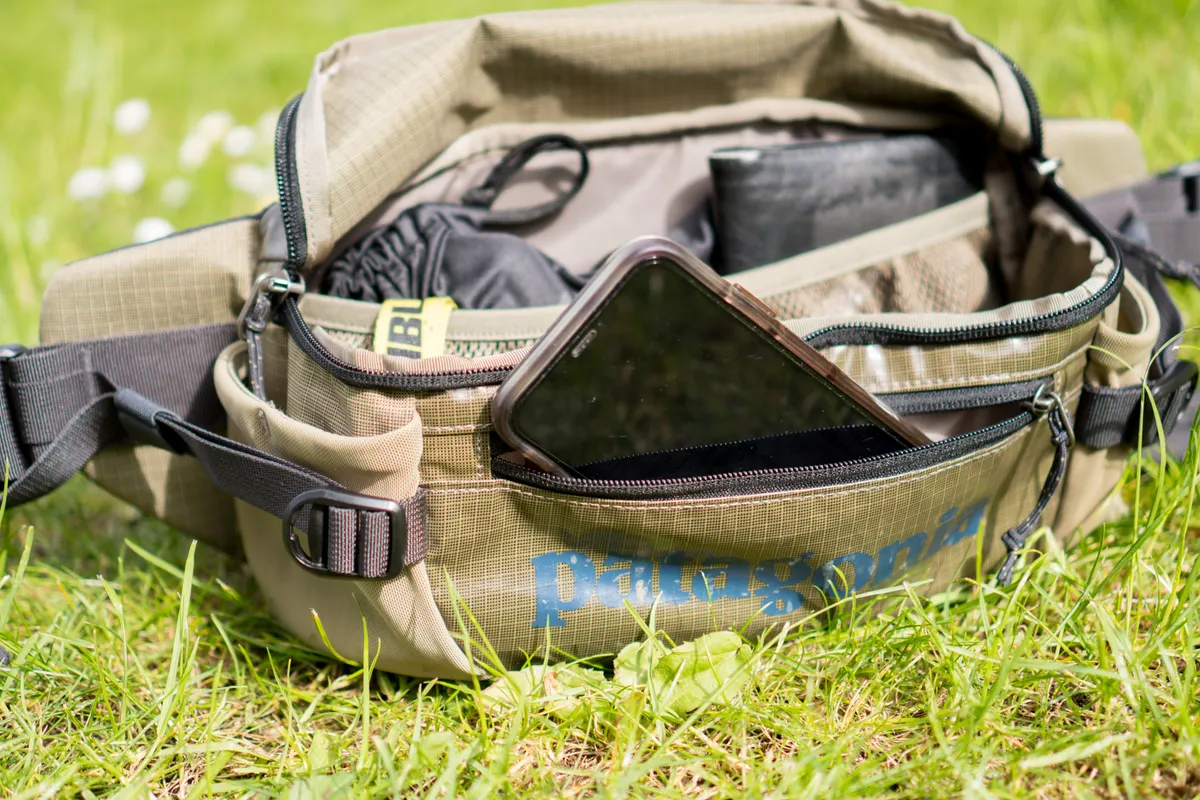
When it did bounce around it was only upwards – there was no side movement and it didn’t drop below my hips.
I suspect it bounced upwards because of the shape of my waist; it was unable to fall down any further because of my hips, but could be bounced upwards because there’s less rigid body structure between the hips and rib cage.
After a bounce, the pack always settled back to its pre-movement position and never required additional readjustment, which was a real bonus.
In fact, the bouncing was so limited that I only noticed it when the pack was seriously heavy, and I didn’t really consider it to be a problem.
In reality, I was carrying around half the above weight in the bag on rides. Removing a water bottle, sandwiches and bananas and wallet shaved some serious grams, and once it was a more reasonable 1,500g it barely moved at all.
And because it was lighter, I was able to wear the straps tighter without putting undue pressure on my bladder.
The Black Hole fabric of the bag’s body has proved to be pretty tough, resisting a host of bramble, hawthorn and gorse bush attacks, but I have managed to snag the material on one of the stretchy side bottle pockets.
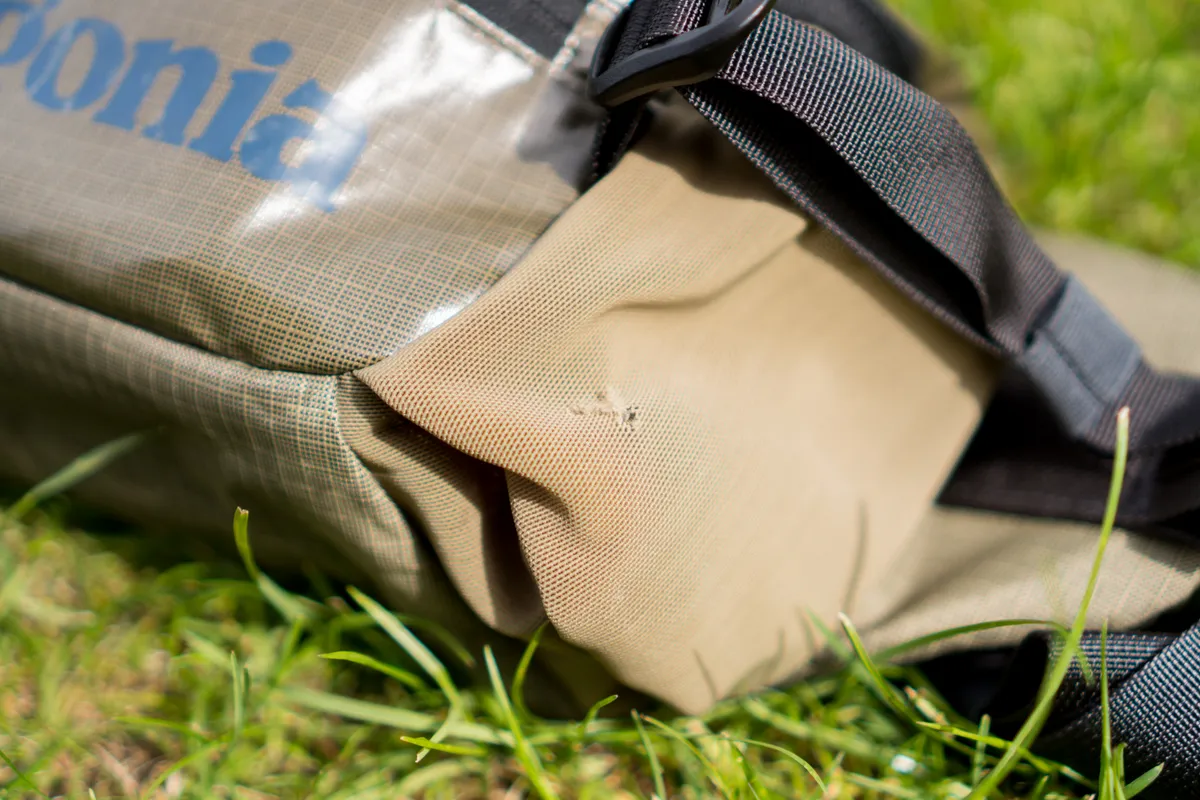
I think this was bad luck rather than poor design, but if you frequently ride through overgrown thorn bushes it could be a consideration.
Although the side compression straps did pull the bag’s bulk closer to my body, they also reduced the waist pack’s capacity by pulling its body towards the hip straps and closing off how much the stretchy side pockets opened.
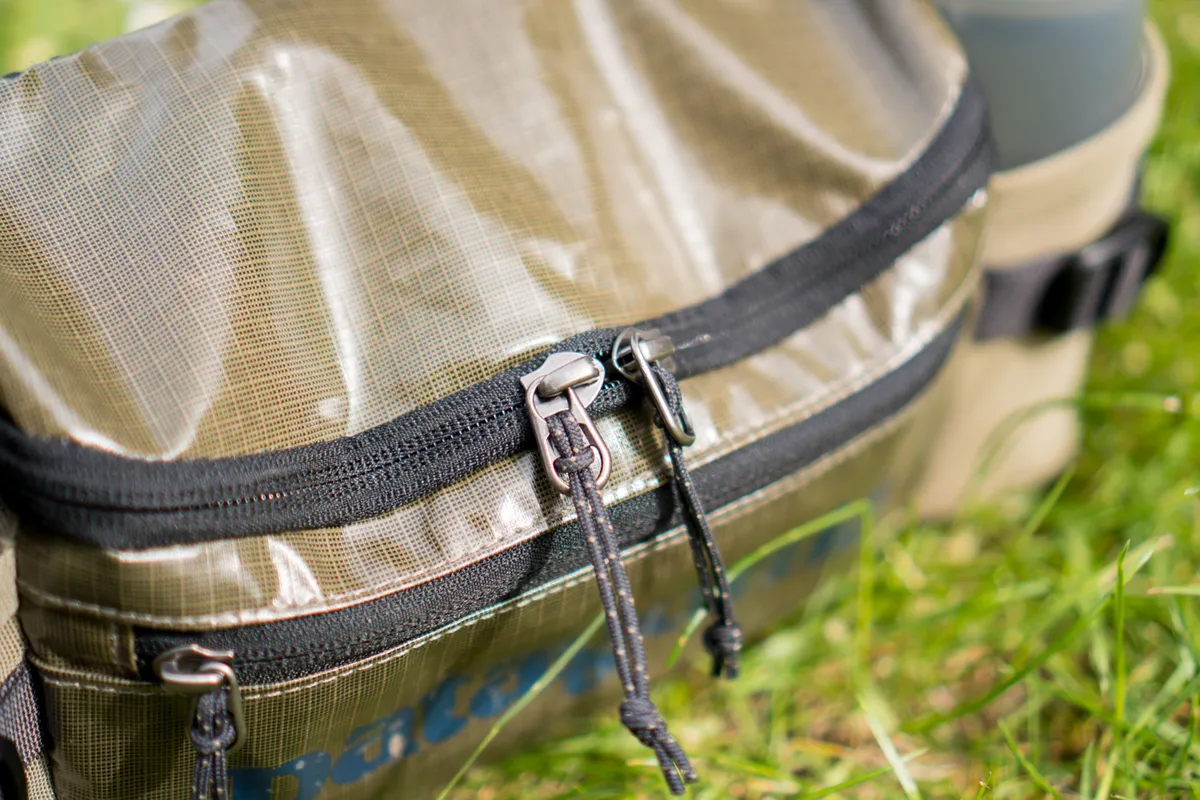
I found that tightening the compression straps before the bag was loaded with my kit meant I couldn’t fit what I wanted in there, so adjusted them once the bag was on. This is easy because they’re within hand’s reach.
The Black Hole material shook off water and mud well and the shiny TPU-film laminate back and top sections allowed water to bead and run off, and were easy to wipe down once covered in muck.
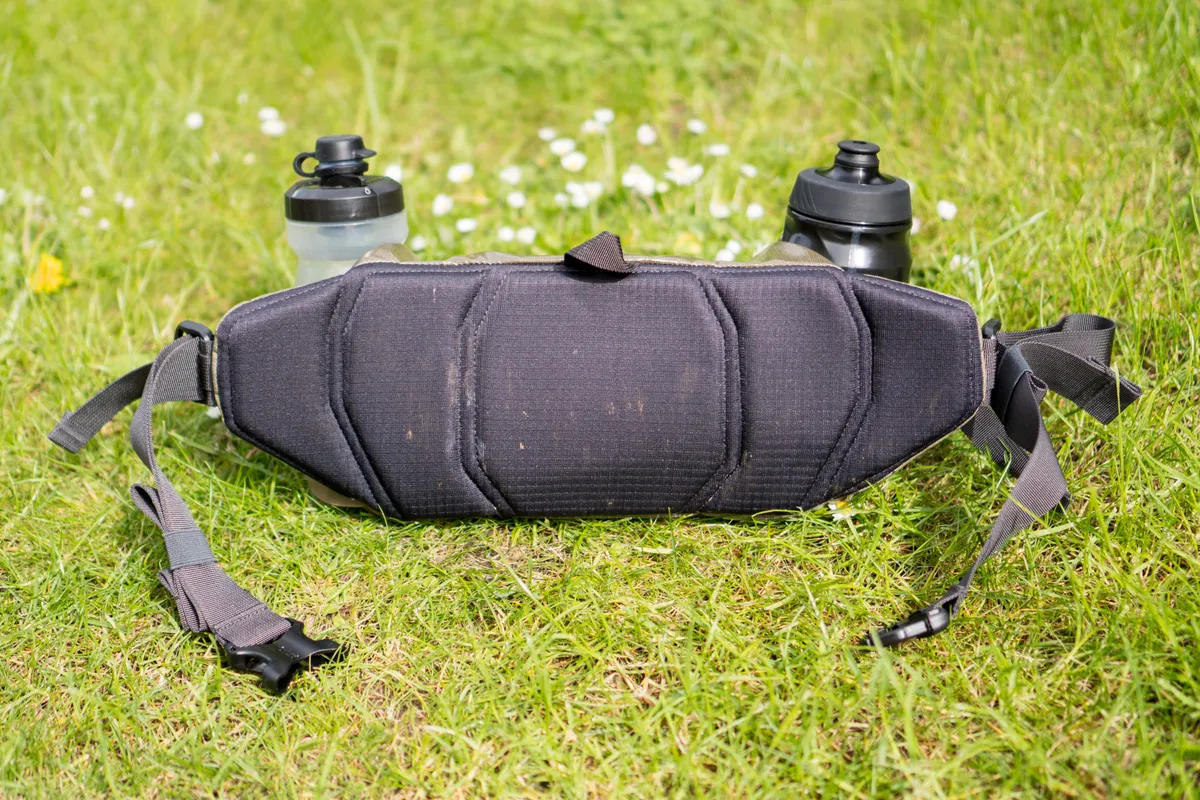
The underside, although waterproof like the top and back, is internally-laminated. This means that the exterior fabric is a little trickier to clean and looks wet – water doesn’t bead.
Although the waterproofing is pretty good, I opted to put my valuables in resealable plastic bags to provide an additional layer of waterproofing should water seep in, especially because the Black Hole Waist Pack is in the direct firing line of dirt and water flying off the back wheel,.
Patagonia Black Hole Waist Pack 5L bottom line
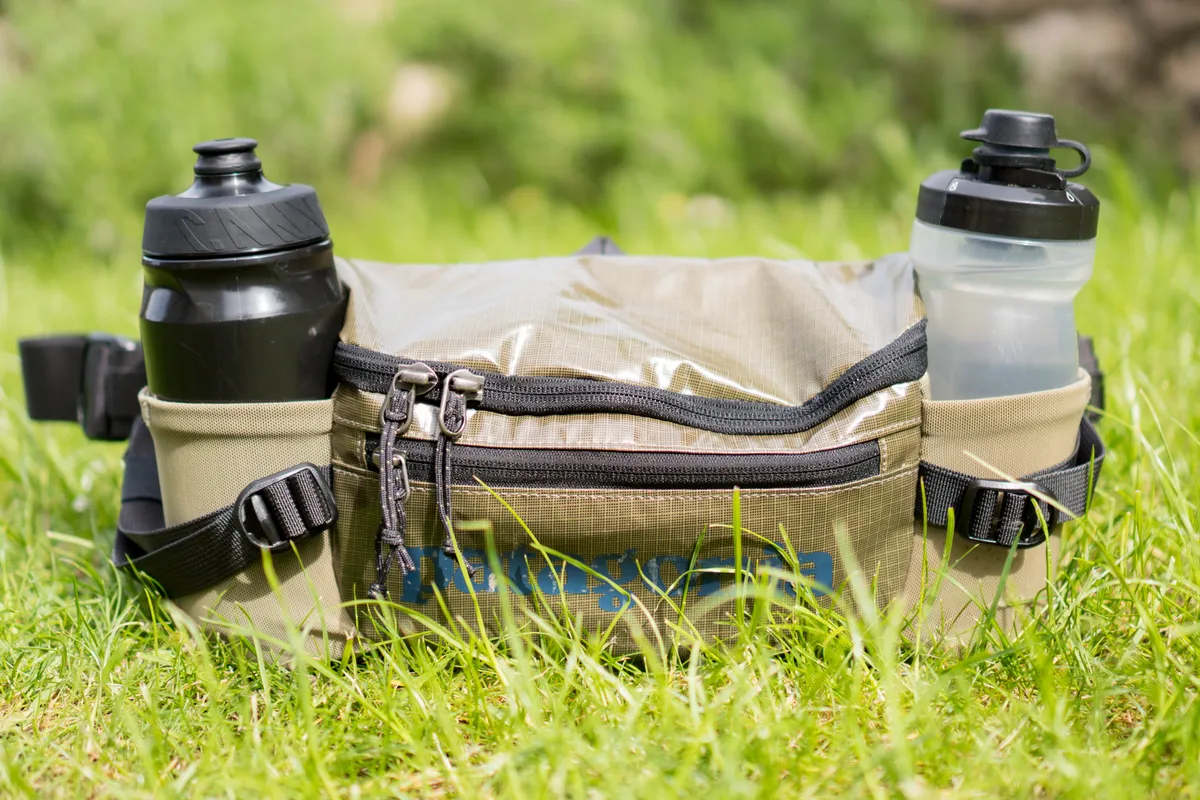
Am I a fanny pack convert? Yes. Do I wish I’d twigged how practical, comfortable and stylish they look years ago? Yes. Is the Black Hole Waist Pack worth £50? Absolutely.
It’s comfortable to wear, even when rammed full of stuff, is lighter than a backpack, doesn’t seem to have a reduced usable space despite being smaller on paper, and it doesn’t bounce around uncontrollably either.
Wearing it also stopped my back’s usually-sweaty suffering without having to leave essentials at home or in the car.
Product
| Brand | Patagonia |
| Price | A$99.99, €55.00, £50.00, $59.00 |
| Weight | 299g |
| br_whatWeTested | Patagonia Black Hole Waist Pack 5L |
Features
| Capacity | 5.0000 |
| Capacity | LITER |
| Features | 100 per cent recycled fabric Weather-resistant Black Hole fabric 38mm wasitbelt Two stretch water pockets Side compression straps Two zipped compartments Interior mesh divider in main compartment Keyring clip in secondary compartment |
